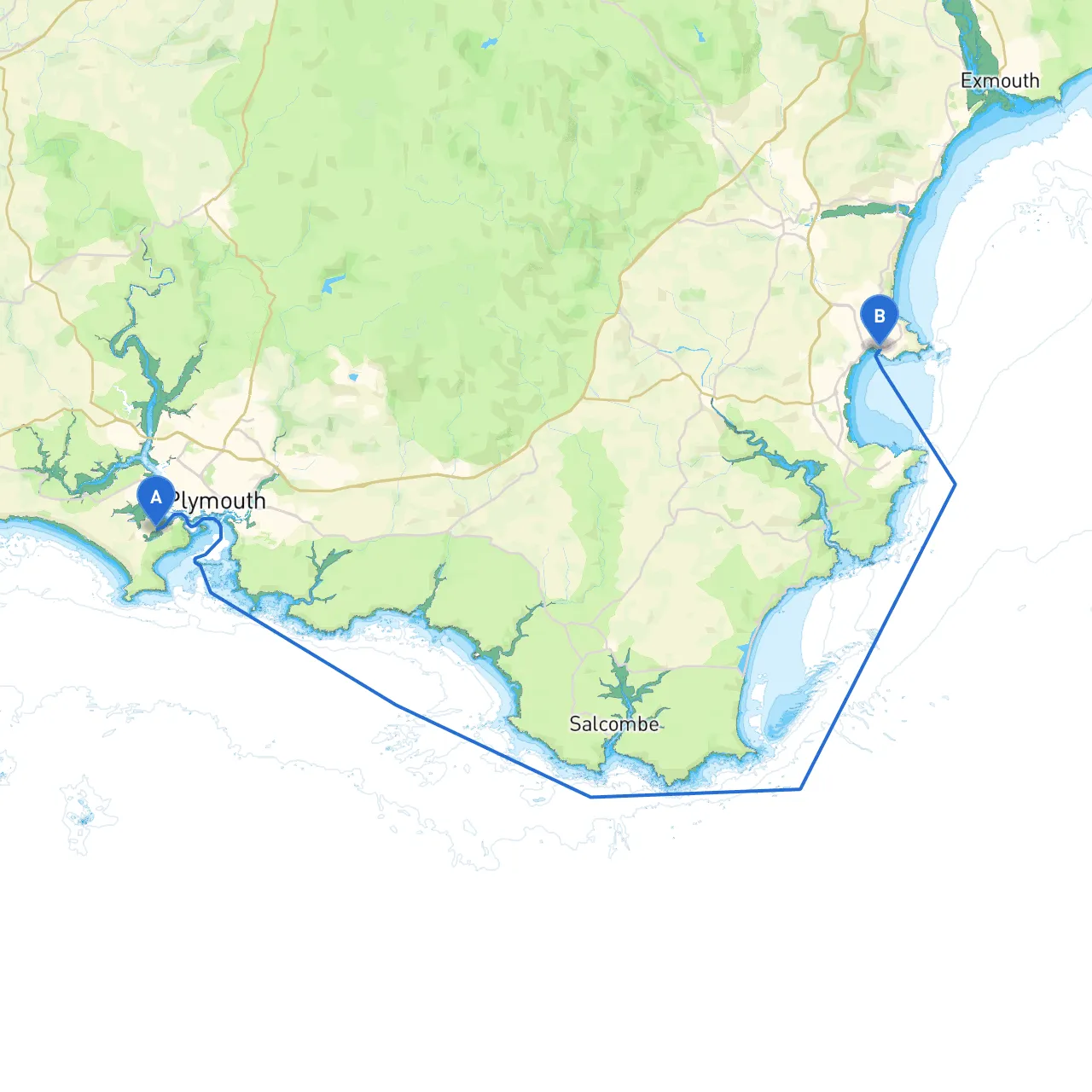

This pilotage plan details a safe and enjoyable journey from Cornwall to Torquay. The route is perfect for coastal cruising enthusiasts, particularly suitable for experienced sailors looking for a mix of adventure and the charm of seaside towns. Along the way, you will encounter stunning landscapes, interesting landmarks, and safe havens should conditions change.
Starting Point: The journey starts at the picturesque shores of Cornwall (Latitude: 50.3534, Longitude: -4.1978). Before setting sail, ensure that your boat is fully equipped and the crew familiar with safety protocols. It’s ideal to leave during favorable weather conditions to navigate smoothly.
1. Initial Leg: Cornwall to Falmouth Bay - Distance: Approximately 10 nautical miles. - Navigational Aids: Watch for the Lizard Point Lighthouse; it serves as a critical reference for rounding the notorious Lizard Peninsula. Pay attention to the currents in this area, as they can be quite strong, especially during spring tides. - Bays for Shelter: Falmouth Bay offers a safe anchorage. It’s a great spot to explore, with Falmouth’s maritime history, charming pubs, and eateries.
2. Next Leg: Falmouth Bay to Mevagissey - Distance: About 5 nautical miles. - Navigational Aids: Keep a keen eye on the Mevagissey Harbour Entrance markers, as local fishing boats may navigate in and out of the harbor. - Points of Interest: Mevagissey is a delightful fishing village with quaint shops and restaurants, perfect for a short stop.
3. Proceeding on to St. Austell Bay - Distance: This leg is approximately 10 nautical miles. - Navigational Aids: As you enter St. Austell Bay, note the Eddystone Lighthouse in the far distance, which can be a reliable guide. Take care when approaching the bay as it is known for underwater hazards. - Bays for Shelter: You can find several sheltered areas within St. Austell Bay, offering good protection from westerly winds.
4. Sailing from St. Austell Bay to Plymouth Sound - Distance: Roughly 15 nautical miles. - Navigational Aids: Watch for the Plymouth Breakwater, and use the approach lights situated near the entrance to Plymouth Sound. - Local Regulations: Be mindful of shipping traffic in this busy entrance to the port. Always maintain a good lookout as vessels of all sizes transit this waterway. - Points of Interest: Plymouth is rich in naval history and boasts attractions like the historic Barbican area.
5. Final Leg: Plymouth Sound to Torquay - Distance: Approximately 20 nautical miles. - Navigational Aids: As you progress towards Torquay, take note of the Berry Head Lighthouse which marks a key point on your route. - Bays for Shelter: You may choose to seek shelter at Babbacombe Bay if weather deteriorates; it offers a calm anchorage. - Arrival in Torquay: As you approach Torquay, be aware of other recreational craft, ensuring safe passage into the harbor.
This route from Cornwall to Torquay offers a splendid mix of scenic landscapes, opportunities for safe harbor, and intriguing towns that make for an enjoyable cruising experience. While the journey is designed to emphasize safety with clear markers and safe havens, the charm of the harbors and the surrounding beauty will undoubtedly call to your sense of adventure. Prepare well, stay vigilant, and enjoy every moment on the water!